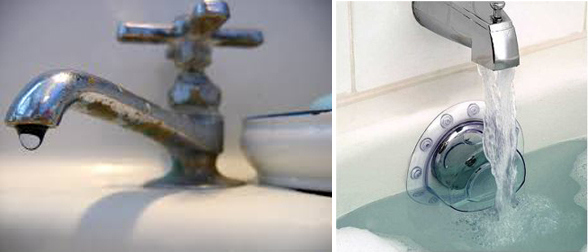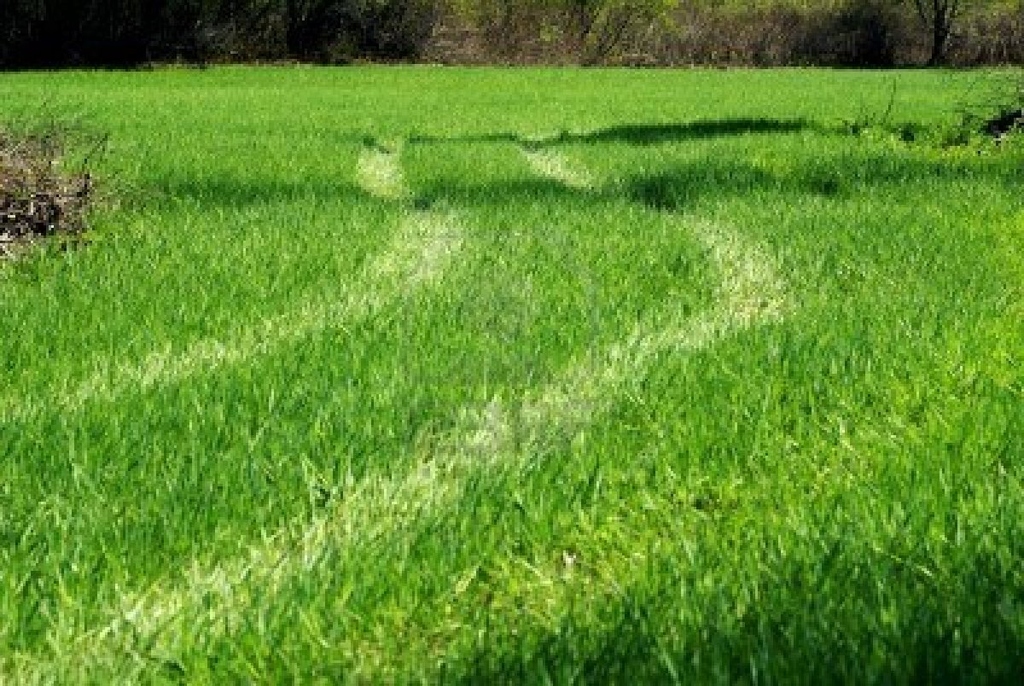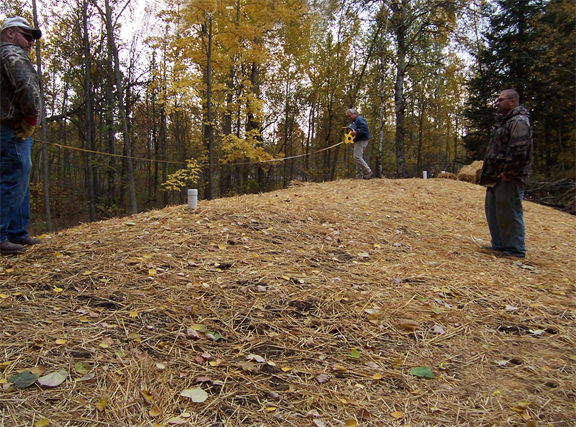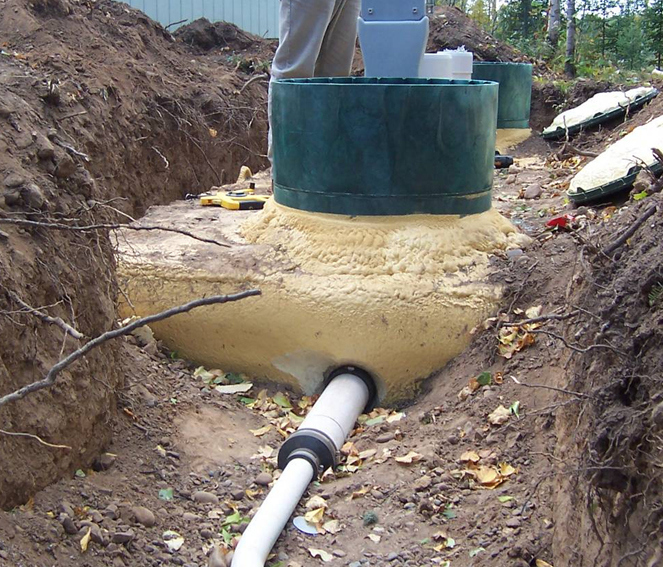
Prevent freezing in the first place
Insulation is key to preventing freezeups. Allowing grass to grow an extra six inches over all parts of the septic system (septic tank, connecting pipes and drainfield/mound) in the fall can provide much needed protection from frost. Another good insulator is a layer of mulch (straw, leaves, hay, etc.) spread eight to 12 inches deep over the entire system. Other ideas include maintaining wildflowers or native grasses over your tank and system. NOTE: if your system is already frozen, do NOT add insulation as it will take longer for the system to thaw.

Don't be a drip, keep it hot
Dripping faucets trickle water into the system which can cause ice to build up and eventually freeze a pipe closed, often right where the septic pipe leaves the home. Fix all leaks and keep the system "energized" with regular doses of warm water ― the warmer the better. Spread out your laundry schedule so you run one warm/hot load a day. Use the dishwasher and take hot baths. However, DO NOT leave water running all the time, as this will hydraulically overload the septic system.

Keep off the grass (and snow)
Keep all vehicle, animal and human traffic off the system. This is a good rule to follow all year long as compacted snow and soils cause frost to go down deeper and faster. Pay special attention to the area between the house and the septic tank. Staying off these areas is important even during the winter as compacted snow provides much less insulation than undisturbed snow. Make sure all risers, inspection pipes and manholes have covers. Sealing them and adding insulation is a good idea.

Keep new systems under cover
A new septic system (tank and drainfield) covered with bare soil will commonly have problems with freezing the first year. Covering a new tank, mound/drainfield with an insulating layer of mulch, etc. can prevent this problem.

Pipe problems
A common cause of freeze-ups are pipes that are not installed with the proper slant or that have settled, resulting in dips in the line. Where a dip or flat spot occurs, sewage can collect and freeze. Especially problem-prone is the connection at the septic tank where dips result when soil backfilled during tank installation settles.

It's frozen. Now what?
If your septic system freezes, call a septic system professional. For Minnesotan's, the Minnesota Pollution Control Agency website includes a search tool for finding certified professionals in your area. Search the Internet for "MPCA SSTS licensed business search." The pros have steamers and high-pressure jetters for thawing pipes.
If it's not feasible to correct a problem, the only option is using the septic tank as a holding tank until the system thaws naturally. Have a pumper empty the tank when it starts to fill up. In this situation, reduce water use by limiting the number of toilet flushes, taking short showers, and using the dishwasher at full capacity.
Frozen septic system no-nos
There are some things you should NEVER do to try to fix a frozen system:
•DO NOT introduce antifreeze, salt or a septic system additive into the system.
•DO NOT pump sewage onto the ground surface.
•DO NOT start a fire over the system to attempt to thaw it out.
•DO NOT run water continually to try to thaw the system. This can overload the system.
Get the straight poop on keeping your septic system in good shape
pca.state.mn.us
For information on how your septic sytem works and how to keep it healthy all year, check out the Minnesota Pollution Control Agency's information for homeowners. You can also search University of Minnesota onsite sewage treatment for additional information.

